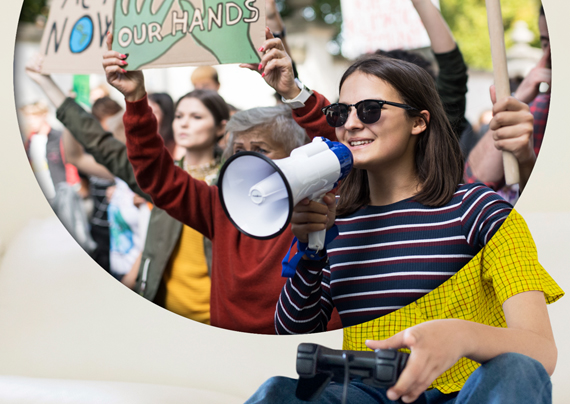The European Education and Culture Executive Agency (EACEA), together with the European Commission, organised an online information session on 12 December to provide information on funding opportunities available under the Erasmus+ 2024 call for proposals European Youth Together (EYT).
EYT aims at creating networks promoting regional partnerships, to be run in close cooperation with young people, and supports partnerships across borders, targeting both youth organisations at grass root level and larger organisations. Projects under this action should contribute to widening the outreach towards youth to ensure a diversity of voices and reach a diverse range of young people, including youth with fewer opportunities.
Info session – European Youth Together (EYT) – Call 2024 – European Commission (europa.eu)
On Tuesday 12 December, the European Commission together with the EACEA agency organized informative webinars on these two centralized Erasmus+ activities in the field of youth. During them, the participants got to know the main goals of both projects, the changes in the call compared to last year and recommendations on how to write a quality project application.
Capacity building in the field of youth
At the beginning of the webinar, a representative of the European Commission emphasized the main goals of the Capacity building projects in the field of youth: capacity building should benefit the involved youth organizations from partner countries, projects should create synergies between formal and informal education, support the development of youth work in the partner countries involved and its 11 goals. Furthermore, the projects should develop interregional cooperation and promote non-formal education.
He then underlined that this year organizations from three neighboring EU regions can participate in this type of project: the Western Balkans (Region 1), the Eastern Neighborhood (Region 2) and the Southern Mediterranean ( Region 3). What is new compared to last year is the inclusion of the Eastern Partnership, which occurred in the context of the war in Ukraine, and the rule that cross-regional partnership is not possible. Another innovation is that organizations from Armenia and Azerbaijan can join as partners, but not as coordinators. The representative of the Commission also pointed out that, unlike other types of projects in the field of youth, Capacity building does not target youth directly, but youth organizations.
In the second part of the webinar, representatives of the EACEA agency provided participants with tips and recommendations on how to write a quality project application. First of all, they emphasized that the deadline for selling applications is March 6, 2024 at 17:00 and applicants should not delay their application until the last minute in order to they avoided possible technical problems and late submission of the application. They further stated that although this type of project primarily targets youth organizations, other organizations or institutions (e.g. private companies or universities) may be involved as partners, if their contribution is clearly explained. EACEA officials also recommended that consortia focus on one or fewer priorities in a project rather than trying to cover them all. Finally, they explained what the minimum composition of the consortium is: a total of at least 4 partner organizations must be involved, including at least 1 from the program country and at least 2 organizations from two different of eligible partner countries from the same region (min. one organization per country).
European youth together
In the first part of the webinar, a representative of the European Commission presented the political context of the European Youth Together projects (deadline March 7). First of all, he emphasized that it is very important that projects target the implementation of EU policies in the field of youth, The connection of the local project level and the political level is essential in this type of project, as the European youth together are part of key action 3 Erasmus+, i.e. the part of the program focused on systemic impact and policy reform. Therefore, he advised those interested in this project to study all the above-mentioned initiatives and documents and to reflect their goals in their project (e.g. strengthening partnerships between youth organizations across Europe, promoting European values, supporting young people to get involved in social events, engaging disadvantaged young people or strengthening the European dimension of the activities of smaller and less experienced youth organizations).
As in the case of Capacity building, in the second part of the webinar, EACEA representatives focused on the conditions for joining the call and gave the participants advice on how to write a successful project application. First of all, they stated that this type of project aims at the promotion and creation of regional partnerships, active European citizenship and is intended for young people. The projects would . 5 organizations from 5 different countries for example in the creation and implementation of the project itself. They then emphasized that only organizations from EU member states or countries associated with the program can participate in European Youth projects together and they should be geographically balanced (it is important involve organizations from both the north and the south, the west and the east of Europe). The minimum composition of the consortium is young people should be actively involved,
EACEA representatives also advised interested parties to avoid overly general project proposals focused on political ambitions, and to clearly link political goals with real problems “on the ground” and their solution to which the project is intended to contribute.

